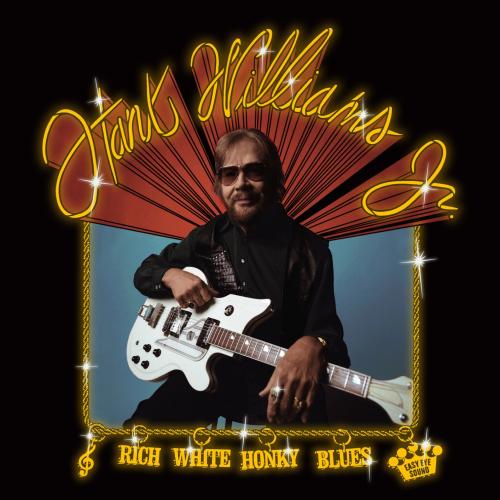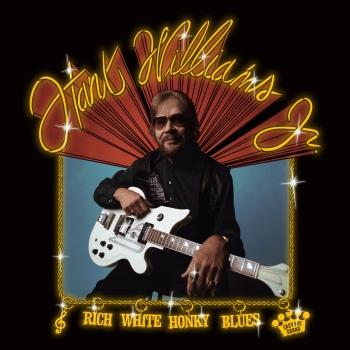
Rich White Honky Blues Hank Williams Jr.
Album Info
Album Veröffentlichung:
2022
HRA-Veröffentlichung:
17.06.2022
Das Album enthält Albumcover
Entschuldigen Sie bitte!
Sehr geehrter HIGHRESAUDIO Besucher,
leider kann das Album zurzeit aufgrund von Länder- und Lizenzbeschränkungen nicht gekauft werden oder uns liegt der offizielle Veröffentlichungstermin für Ihr Land noch nicht vor. Wir aktualisieren unsere Veröffentlichungstermine ein- bis zweimal die Woche. Bitte schauen Sie ab und zu mal wieder rein.
Wir empfehlen Ihnen das Album auf Ihre Merkliste zu setzen.
Wir bedanken uns für Ihr Verständnis und Ihre Geduld.
Ihr, HIGHRESAUDIO
- 1 .44 Special Blues 01:58
- 2 Georgia Women 04:05
- 3 My Starter Won't Start 03:14
- 4 Take Out Some Insurance 03:58
- 5 Rich White Honky Blues 03:56
- 6 Short Haired Woman 04:53
- 7 Fireman Ring The Bell 05:28
- 8 Rock Me Baby 03:57
- 9 I Like It When It's Stormy 03:19
- 10 Call Me Thunderhead 04:03
- 11 TV Mama 04:04
- 12 Jesus, Won't You Come By Here 02:50
Info zu Rich White Honky Blues
Hank Williams, Jr. Ist seit über einem halben Jahrhundert ein wahrhaftiger Outlaw der Country-Musik. Doch mehr noch als die prahlerischen Singles, die raubeinigen Fantasievideos oder der unerbittliche Sinn für den Blue-Collar-Boogie, ist die 72-jährige Legende im Kern ein echter Blueser.
Mit dem neuen Album „Rich White Honky Blues“, welches am 17. Juni veröffentlicht wird, wird der Country Star seinem Erbe gerecht, indem er mit Terpentin und rauem Holz den Hill-Country-Blues interpretiert, so wie es sein Vater schon im ähnlichen Stil getan hat. „Der Blues ist der Ursprung von allem“, räumt Williams ein. „In meiner Familie ist das der Anfang von allem, was mit Musik zu tun hat; alles beginnt mit Tee-Tot und fließt von dort weiter. Ich habe schon immer mit diesem zurückgenommenen Blues geliebäugelt – bis zurück in die 80er Jahre.“ Eine treibende Kraft hinter diesem Album ist der mit dem GRAMMY ausgezeichnete Produzent des Jahres, Dan Auerbach. Im Laufe von nur drei Tagen wurde „Rich White Honky Blues“ fertiggestellt, doch das Projekt stockte kurz, als Williams Familie durch das plötzliche Ableben seiner Frau Mary Jane Thomas von einer Tragödie heimgesucht wurde. Williams erwog zwar, die Ankündigung des Projekts zu verschieben, aber die Zeit mit seiner Familie führte zu einer Schlussfolgerung: Musik bietet Trost in den schwierigsten Zeiten. Das und mehr vermittelt auch das 57. Studioalbum von Hank Williams, Jr. „Rich White Honky Blues“.
Hank Williams Jr., Gitarre, Gesang
Kinney Kimbrough, Schlagzeug
Dan Auerbach, Dobro Gitarre
Eric Deaton, Gitarre
Kenny Brown, E-Gitarre
Bobbie Wood, Klavier, Hammond B3
Hank Williams Jr.
With one of the most famous pedigrees in country music, Hank Williams Jr. spent his early career being told to perform and copy his father’s music. Unlike many offspring of famous parents, however, he managed to emerge from his father’s shadow, but only after he‘d made a complete break in the late 1970s, reinventing himself as a rowdy country rocker.
Born Randall Hank Williams – better known as Hank Jr. – young Hank lost his father before he was four. Pushed into performing by his mother at the age of eight, Hank sang his father’s biggest hits and made his first appearance on the Grand Ole Opry at 11. Though he had some success (his 1964 recording of “Long Gone Lonesome Blues” climbed to No. 5 on the country charts), Hank grew tired of living his life, as the title of his self-penned Top 10 hit reveals, “Standing in the Shadows.” He made some attempts at rock and roll, performing under the name Rockin’ Randall, and was desperately unhappy, falling into drug and alcohol abuse soon after the age of 18. He severed ties with his mother. In 1974, he tried to kill himself.
There was a doctor, he said: “You’ve been taught to look like, act like, and be like Hank Williams your whole life. He died at twenty-nine. And you’re going to beat him.” Those were his exact words. And he said, “I want you to start saying, ‘the hell with that.’ And you go do your thing and you kiss that other stuff goodbye.” That was some pretty good advice.
Williams moved to Alabama in an attempt to pull his life together and find himself musically. He began a series of collaborations with Southern rock and Outlaw musicians – Waylon Jennings, the Marshall Tucker Band, Charlie Daniels, and others – and released Hank Williams Jr. and Friends, generally considered his watershed album. Tragedy struck the following year when, while climbing Ajax Mountain in Montana, Williams fell 442 feet, crushing his face and splitting his skull in two. After two years of reconstructive surgery and recovery – in which he relearned to speak (and sing) – he adopted his trademark beard, sunglasses, and hat and returned to the studio. He began the slow rebuilding of his career, this time entirely in the Southern country-rock genre.
In the last six months of the 1970s, Hank Jr. had two Top 10 singles – “Family Tradition” and “Whiskey Bent and Hell Bound”– the first salvos in a virtually uninterrupted barrage of 29 Top 10 hits, lasting through 1988. His appeal was primarily among young, rowdy audiences, drawn to his swaggering, hedonistic anthems. His banner year was 1982, when he had no less than nine albums on the chart at the same time, a record for country music. In 1988, he was named Entertainer of the Year by the CMA and the ACM.
In 2006, Williams was given the Johnny Cash Visionary Award at the CMT Music Awards and in 2008 was honored as a BMI Icon for his “unique and indelible influence on generations of music makers.” Williams continues to tour and record, releasing It’s About Time on the Nash Icon label in 2016.
Dieses Album enthält kein Booklet










